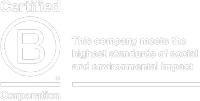“You can’t run a business off love, trust and pixie dust.”
Jack Delosa, The Entourage
At Mezzanine, we are BIG on love, trust and pixie dust – it’s part of our DNA. But just like everyone else, we operate more efficiently with a structure and framework in place to enable the team to innovate and work their magic.
Companies often start with an enthusiastic and tight-knit team, who bounce ideas and energy off each other in a really exciting way. And then a few more people join the team and it’s great – the company is growing! Success! And then a few more join.. and then a few more.
Somewhere in the midst, it becomes hard to maintain the original company culture where everyone knew exactly what was going on and exactly what they needed to do to maximise every hour of the day and drive the team forward.
Every business must struggle with finding the balance between company culture and an efficient work structure to thrive and help drive their team and purpose.
I have worked for big companies and for small companies, for not for profits and for public companies and for little family-owned businesses. One thing that I have noticed is that they all seem to have some of the same challenges as they grow and expand, including:
Clarity around roles and responsibilities
In a creative team, it is wonderful for people to have the freedom and autonomy to be able to take initiative and explore ideas above and beyond their role. At the same time, it is important that they are getting their job done.
Who spell checks the packaging before it goes to print? Is it sales or marketing that are responsible for updating that detail on the system? It is amazing how often errors can occur and time is wasted because people believe that someone else is taking care of a vital detail in the process.
Good on-boarding is important – if new staff aren’t quite sure on who is meant to take care of what, it can be a compounding problem.
Frequent reviews of any reoccurring issues can also highlight these kinds of misunderstandings. Sometimes it is even worth mapping out the whole process. It is definitely worth having the conversation with your team – do they feel 100% clear on who is responsible for what? Or is something falling through the cracks?
Thorough understanding of the company vision and how it translates into people’s day to day roles
We believe that most businesses start with passionate people who want to make a positive impact. As the business expands, like-minded people are drawn to these companies and want to join in the journey. But once they are there – is it clear how their role can contribute?
People feel more motivated if they feel like they can make a difference. No matter what role you play in the company, you want to know that you are working towards the company’s goals and vision. That can be tricky sometimes, particularly in a larger company.
Businesses frequently fail not due to poor strategy, but poor execution. Leaders need to make sure that they communicate the company vision and translate it into operational terms – how do your day-to-day processes link back to the vision? Does each team member have goals and challenges that relate? Regular communication and updates are vital.
Processes, forms and procedures to enable people to operate at maximum efficiency
You want your business to run like clockwork. But if you don’t have solid processes in place then this is unlikely to happen. It is not about constraining people from innovating, but about making sure that everyone isn’t trying to reinvent the wheel, so to speak. Why spend time figuring out how to get something done, or creating a new template, if someone has already done it ten times before you?
If you have a clear filing system, appropriate templates and forms set up, processes to ensure that people know how to get things done, then it saves an amazing amount of time and frustration.
As long as these systems are implemented in a way that allows for and encourages continual improvement, then you can empower your team to be agile.
When your company has begun life as a relaxed, fun-loving group who interact more like friends than colleagues, structure can seem like the enemy of culture. And to think, if you don’t need to worry about work getting done effectively and efficiently, then you have more time for team building, innovation and a quick round of ping pong on a Friday afternoon.








